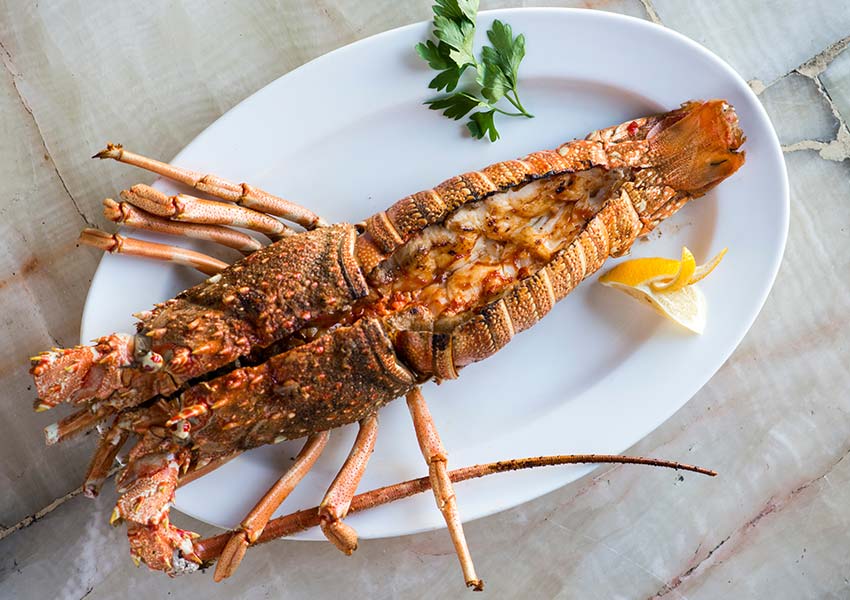One of the best things about a traditional New England lobster dinner is how simple it is to make. No complicated sauces, no fancy techniques, no need to fire up the oven on a hot day. And you need only one pot. But just because it’s simple doesn’t mean that you can’t run into trouble. In fact, because this is such an elemental meal, it’s important to get the details right. Mostly, that means cooking your lobster the right way. Here are five of the most common mistakes in cooking lobster, and how to avoid them.
Nothing beats a fresh lobster feast in the summer The sweet, succulent meat is loved by seafood fans across New England and beyond. However, improperly cooked lobster can lead to rubbery, mushy, or even unsafe results Knowing exactly when your lobster is done is key to lobster perfection.
In this comprehensive guide, we will cover everything you need to know about determining when lobster is fully cooked and ready to enjoy. You’ll learn:
- The best methods for testing doneness
- Visible signs that lobster is finished cooking
- Common mistakes to avoid
- Pro tips for flavorful, tender lobster success
With these insider tips, you’ll feel confident cooking impressive lobster feasts at home. Let’s dive into the signs that your lobster is cooked to tender, delicious perfection.
Checking Internal Temperature
The most reliable way to assess doneness for any meat or seafood is by taking its internal temperature For lobster, the magic number is 140°F.
Use an instant-read thermometer to test the thickest part of the lobster tail. Once it hits 140°F, your lobster is perfectly cooked. The flesh will be opaque and firm, while still succulent and moist.
Checking temperature is foolproof, but does require an extra tool. Next, we’ll cover the visual signs that your lobster is done.
Looking for Visual Cues
If you don’t have a thermometer handy, you can use the following visual cues to determine when your lobster is fully cooked:
-
Bright red shell – The shell will turn bright red-orange with no traces of the dark green/black of a live lobster
-
Opaque white flesh – The lobster meat will be an opaque pearly white when perfectly cooked
-
Firm, tightened meat – The flesh will firm up and tighten around the tail as it cooks
-
Easily separated meat – The meat will readily pull away from the shell when fully cooked
Trust these signs, and resist peeking too early. Opening the pot lets heat escape and makes determining doneness tricky.
Avoiding Common Mistakes
While achieving perfect doneness is simple with a thermometer and the above tips, it’s also easy to make mistakes:
-
Boiling too long – Err on the side of undercooking. Lobster overcooks quickly.
-
Cooking too many – Crowding the pot leads to uneven cooking. Cook lobsters in batches if needed.
-
Not fully thawing – Ensure frozen lobster is fully thawed before cooking.
-
Relying on time alone – Times serve as guides, but check doneness yourself. Lobster size impacts cooking time.
-
Not draining – Drain and cool lobsters immediately to stop cooking and prevent soggy meat.
With the methods above and avoiding these pitfalls, you’re set up for tender, perfectly cooked lobster success!
Pro Tips for Maximizing Flavor
Your expertly cooked lobster deserves equally excellent flavor. Keep these pro tips in mind:
-
Season the boiling water with salt, lemon, and/or seaweed. But don’t oversalinate.
-
Cook lobster right before serving. The fresher, the better.
-
Chill cooked lobster promptly to lock in sweetness. Store up to 2 days.
-
Brush with melted butter before serving. Clarified butter is divine.
-
Finish with a squeeze of lemon, fresh herbs, and/or grated Parmesan.
-
Serve with drawn butter, lemon wedges, crusty bread, and white wine.
Putting Your Lobster Knowledge to Use
You’re now ready to impress guests with expertly prepared lobster feasts. Confidently boil, steam, or grill lobster, testing doneness precisely. Serve up the sweetest, most tender and delicious lobster around.
Keep this guide handy, and review the signs of perfect doneness. With the fail-proof tips above, you can master cooking times for any size lobster. Don’t be afraid to pull lobsters early – you can always finish cooking slightly underdone lobster. But you can’t undo overcooking.
I hope these doneness tips demystify cooking flawless lobster at home. The next time your family is craving a summer lobster bake, you’ll know just when to pull the perfectly cooked lobster from the pot. Now relax, enjoy the process, and savor the ultimate seafood delicacy from the gorgeous waters of New England. The buttery, sweet meat you worked so hard to prepare flawlessly deserves your appreciation!

5 Mistakes to Avoid When Cooking Lobster
- It will take 8 to 12 minutes to boil lobsters that are about 1 to 1½ pounds in weight.
- It takes 9 to 12 minutes to steam lobsters of average size, but it depends on how big they are.
- If you can find soft-shell lobsters in the summer, cook them for two to three minutes less than if you could find hard-shell lobsters in the winter.
Lobster Tails 101
FAQ
Can you overcook lobster?
What temp does lobster finish?
